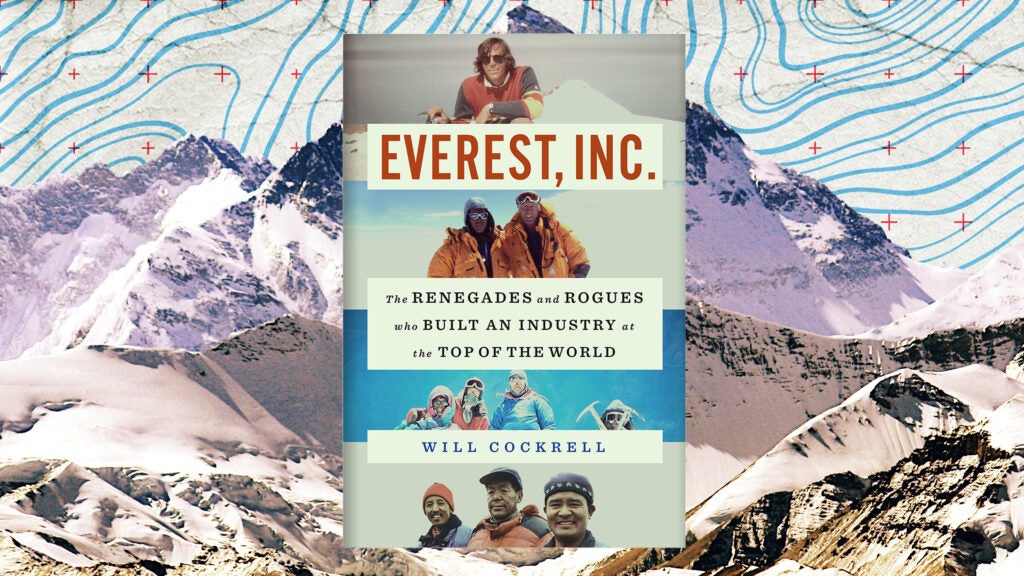How Everest Was Turned into an Industry

🌈 Abstract
The article discusses the book "Everest, Inc." by Will Cockrell, which explores the history and transformation of the commercial climbing industry on Mount Everest. It covers the key events, personalities, and tensions that have shaped the Everest industry over the decades, from the early expeditions to the rise of guided commercial climbing and the increasing involvement of Nepali and Sherpa climbers in shaping the industry's future.
🙋 Q&A
[01] The Author's Initial Skepticism
1. What was the author's initial reaction when Will Cockrell told him he was writing a book about Mount Everest?
- The author was initially skeptical about the idea, as there were already many books written about Everest, and his coffee table was in danger of collapsing under the weight of Everest encyclopedias and memoirs.
2. What changed the author's mind about the book?
- When Cockrell explained that the book would be about the entire guiding industry created around Everest, the author became more interested, as he had over 25 years of experience in this "industry."
[02] The Transformations Covered in the Book
1. What are the two great transformations that the book focuses on?
- The first transformation was the shift from expeditions backed by nations to client-funded, guided climbs in the late 1980s and early 1990s.
- The second transformation is the ongoing power transfer from foreign climbers and guides to Nepali and Sherpa climbers who are shaping the future of the Everest industry.
2. How does the book provide an "understandable and vastly entertaining context" for these transformations?
- The book is not just a catalog of expeditions and statistics, but rather a story with narrative drive, showing how one event led to another. The author notes that Cockrell's skills as a real journalist and storyteller, rather than an antagonist with scores to settle, allowed him to track down and interrogate the many "quirky and often egotistical characters" who built the Everest industry.
[03] The Author's Perspective on the Book
1. What was the author's initial concern about Cockrell's ability to write the book, and how was that concern addressed?
- The author was initially concerned that Cockrell, not being an Everest climber or guide himself, would not be able to understand the business and would just take "the usual potshots" about exploitation of Sherpas, environmental damage, and unearned access to the mountain.
- However, the author was relieved to find that Cockrell did not sensationalize the controversies, but rather addressed them in a balanced way, shining a light on the complex ethnic and economic tensions that have driven change in commercial climbing.
2. What did the author learn from reading the book that surprised him?
- The author realized that he only knew the main players in the Everest industry "superficially," and that Cockrell's reporting uncovered new insights into what motivated them and who they actually were, beyond the author's own personal experiences.
3. How did the author feel about the coverage of certain individuals in the book?
- The author got "mildly irritated" that some "relentless self-promoters" received more coverage in the book than some of the hardest-working Sherpas and guides on the mountain.
[04] The Book's Perspective on the Everest Industry
1. How does the book address the perception that climbing Everest is "death-defying and extreme"?
- The book suggests that this perception has been fueled by the media's tendency to hype the deaths and disasters on Everest, which has in turn served as "fuel on the commercial fire," leading to increased business in the wake of well-publicized accidents and mishaps.
2. How does the book explain the increasing accessibility of Everest and the implications for safety?
- The book points out that as Everest becomes more accessible, with more people on the mountain, there will be more people dying, even without major storms or avalanches. The shift towards less experienced mountain workers and operators taking on more clients for less money will also contribute to this increased risk.
3. How does the book address the changing power dynamics in the Everest industry?
- The book gives an "important and articulate voice" to the Sherpas and Nepalis who are driving the current phase of commercial climbing, not just on Everest but on other high mountains as well. It suggests that the era of the great Western Everest guides has passed, and a new, more diverse future is emerging.